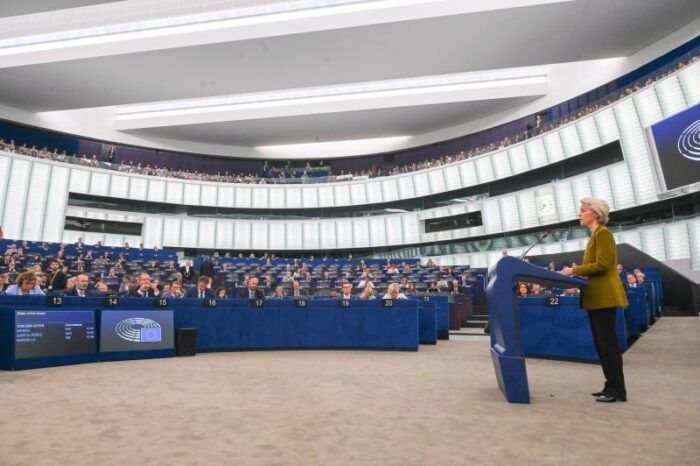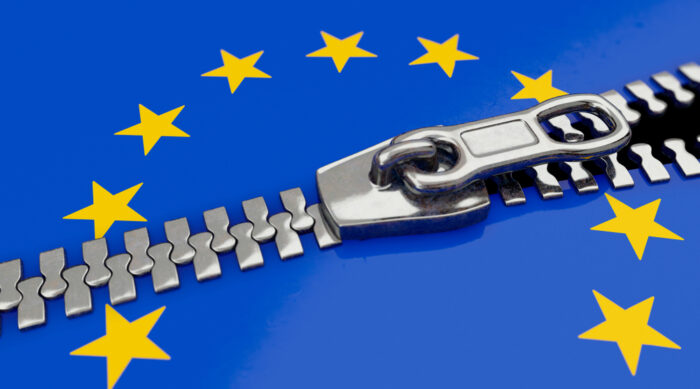The Progressive Post
Finland’s far-right government runs down the welfare state

Finland has its most right-wing government since the 1930s, and this can also be seen in its economic policy. Massive cuts to social security and public service spending undermine the welfare state, and the government’s labour market reforms weaken employees’ negotiation power.
Prime Minister Petteri Orpo’s right-wing government has been in power in Finland since the spring 2023 elections. Orpo’s National Coalition Party (NCP) won the race with 20.8 per cent of the vote and agreed to form a government with the populist right Finns Party that was just 0.7 percentage points behind. They formed a majority coalition government with the support of two smaller right-wing parties.
The government can be called extreme right-wing, as a similar coalition has not been seen since the 1930s, when fascism also gained influence in Finland. This can also be seen in the government’s economic policy, which has been clear from the beginning: public spending on social security and public services is cut dramatically. This starts to harm especially those with low income and in need of social services. However, the fiscal consolidation has affected everyone except the richest, who have even received tailored tax reductions.
These budget cuts are not about small amounts. The government says it will consolidate public finances with 9 billion euros annually. This corresponds to about 10 per cent of the central government budget or 3 per cent of Finland’s gross domestic product (GDP). For many low-earning families, this means hundreds of euros less for living each month, and the queues for public health services have begun increasing.
However, in reality, the fiscal consolidation is significantly smaller – but still enormous – at approximately half of the 9 billion. The government exaggerates the figure with selective calculation methods. It has, among other things, re-classified about 1 billion euros of ordinary annual budget spending as ‘an investment programme’ and ignored it in the calculations. This blurring is because the government’s narrative relies essentially on the fact that it claims to bring Finland’s debt under control in the face of necessity.
The election campaigns of both main governing parties relied on debt scaremongering and the claim that they would turn the public debt into decline. Their central message was that the centre-left government of the Social Democratic Prime Minister Sanna Marin had made irresponsible economic policy. This is even though the debt growth during Marin’s government was mainly due to the Covid-19 pandemic, from which Finland came out among the best in the world in economic and health indicators. At the end of 2023, Finland’s debt-to-GDP ratio was 75.8 per cent. The ratio has risen clearly, especially after the financial crisis, but it is still below the average in both the EU and the euro area. Finland’s interest rate has also remained relatively low.
Despite these facts, debt scaremongering paid off and impacted the voters’ decision. According to many estimates, it was a key reason for the election result. Both the NCP and the Finns Party promised significant spending cuts before the elections, but there were also differences in their economic programmes. Respecting their populist roots, the Finns Party did not present the means to implement the massive spending cuts it promised. Instead, the NCP proposed cuts to both social security and service spending.
As a result, the government’s economic programme pretty much matches the goals of the NCP, whereas the Finns Party broke many key promises it made before the elections. For example, before the elections, party chair Riikka Purra, who later became finance minister, pledged her party would not accept any budget cuts that would affect those with low income. Nor did the Finns Party election programmes include proposals to cut spending on social and health services or education.
The government is undermining the foundations of the Finnish welfare state also in another way. Until the 2023 elections, the Finns Party appealed to the working class. Now, however, it has made a massive U-turn after the elections when drafting the government’s labour market policy. The government is implementing more than 20 reforms that will weaken the negotiating power of employees and trade unions. This will, in many ways, break down the Finnish labour market policy model built since World War II, where governments have negotiated all major reforms in cooperation with representatives of employees and employers. The labour unions have called the turn a scam as the current reforms were not of the Finns Party’s election programmes, nor, even, of the NCP’s. Instead, they were copied directly from the programmes of the employer associations.
It can be considered another broken promise that the government is not able to eliminate budget deficits despite the pledges both largest government parties made before the elections. According to the latest forecasts, the central government debt will rise as much as it did during the previous Marin government, but now even without a pandemic.
This is primarily because the government does not want to increase taxes on the rich, even though the highest-earning one per cent pay proportionally less taxes than lower-earning income groups. The capital accumulated by the rich is taxed at lower rates than high salaries. The taxes of the richest were even lowered a bit this year. This spring, the government decided to increase some taxes. However, they were primarily concerned with regressive taxes, affecting low-income earners proportionally more. From the beginning of this September, Finland’s general value-added tax rate rose to 25.5, the second highest in the EU.
The total support of the governing parties, especially the Finns Party, has fallen somewhat since the elections. Still, it is not certain that it could not recover before the 2027 parliamentary elections. Party chair Purra has already stated that the harsh spending cuts must be continued after this government’s term. The coming years will show whether the Finnish welfare state is about to be scrapped once and for all. The development of the rule of law in Finland has also stalled during the time of Orpo’s government.
The left-wing opposition has plenty of work to do if it wishes to turn the tide. The hope should not be lost as the margins are low. The current government has never come close to the popularity of Marin’s government. It is also worth remembering that the election last year was tight. The Social Democrats fell short of victory by less than one percentage point, and the previous government’s parties got nearly half of the votes. Now, the party is leading the polls with the new chair, Antti Lindtman, who is trying to keep the lead until the elections in 2027.
Photo credits: Shutterstock.com/Alexandros Michailidis




